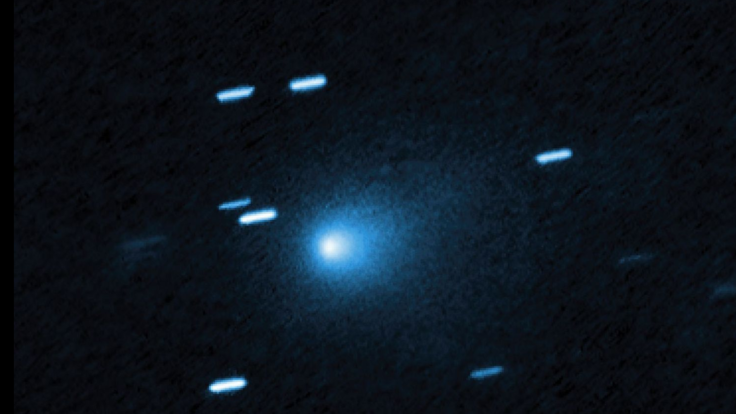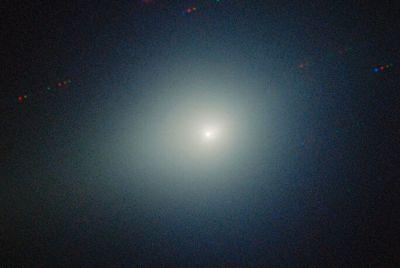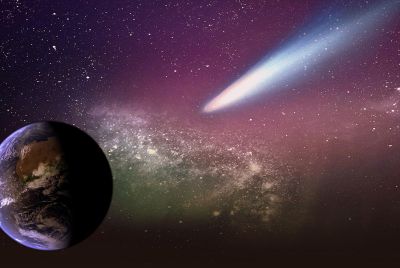Comet 3I/ATLAS Blazes 7X Faster: Harvard Expert Suggests 'Hint of Design'
Comet ATLAS blazes 7x faster; Harvard expert hints at 'design'.

Something strange is happening at the edge of our solar system. An interstellar visitor, comet 3I/ATLAS, has just reappeared from behind the sun, and it is not behaving like any comet scientists have seen before. It has emerged with an unexpected glow that has left researchers stunned and scrambling for answers.
Unlike the comets born in our own system, 3I/ATLAS does not orbit our sun; it is a true interstellar traveller just passing through. The object made its closest approach to the sun on Wednesday, observed by three NASA spacecraft after being hidden from Earth's view since 21 October. What those spacecraft saw was baffling.
Why Is 3I/ATLAS Brightening Seven Times Faster Than Normal?
Data showed the comet brightened at a rate about seven times faster than typical comets as it neared the sun. This observation is a significant puzzle. Researchers who captured the observations noted: 'The reason for 3I/ATLAS's rapid brightening... remains unclear'.
This rapid acceleration far exceeds the brightening rate of most Oort cloud comets, which are the typical long-period comets from our own solar system.
A Mysterious Blue Glow and a Colossal Coma
Even more puzzling, the comet now appears distinctly bluer, a complete reversal from its previously reddish hue. This colour shift points to a complex chemical process. Scientists speculate this blue glow likely comes from specific gas emissions, such as carbon molecules (C2) and perhaps Amino groups, rather than just being sunlight reflecting off dust.
This object is also colossal. Observations show 3I/ATLAS is enveloped in a huge, fuzzy coma, roughly half as wide as the full moon appears in our sky. A glowing plume was also detected extending nearly 186,000 miles around the object, comparable to a carbon dioxide halo seen months earlier.
How Spacecraft Pierced the Sun's Glare to Find Water
Ground-based telescopes struggled to observe 3I/ATLAS while it was so close to the sun, hidden by the intense glare. The study, by researchers from Lowell Observatory in Arizona and the US Naval Research Laboratory, pulled data from NASA's STEREO-A and SOHO spacecraft.
They also used a weather satellite, GOES-19, which carries a coronagraph, a device that helps capture the comet's brightness and colour. While optical telescopes were blinded, radio observations succeeded. These detected huge amounts of water-related molecules, which increased sharply as the comet approached the sun.
☄️ Comet #3I/ATLAS is currently making its closest approach to the Sun.@ESA_Juice might catch the best view of this comet in a very active state. Juice will attempt observations in November 2025, with data received on Earth in February 2026 👉 https://t.co/F5fhuSSdal
— ESA Science (@esascience) October 30, 2025
Follow… pic.twitter.com/tvXSaN4u9m
A 'Possible Hint of Design' From a Harvard Expert
The object's strange path is what excites Harvard professor Avi Loeb, who has been studying it for months. 'This unfavorable geometry, a possible hint of design, placed the comet within the fields of view of several space-based solar coronagraphs and heliospheric imagers, allowing continuous observation during its final approach to perihelion', he said.
This quote adds a layer of provocative mystery to the event. Scientists still do not fully understand the rapid brightening. It may be related to unusual activity from gases like carbon dioxide (CO2) and water (H2O), or unique properties of the comet's nucleus, such as its composition, shape, or structure.
The comet is expected to return to visibility in twilight and night skies during November and December. Only then will ground-based telescopes be able to study it in greater detail, revealing if its post-perihelion behaviour means it continues brightening or fades quickly.
© Copyright IBTimes 2025. All rights reserved.



















